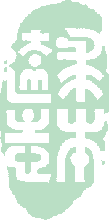The UN Education, Scientific and Cultural Organization (UNESCO), has approved the inclusion of Peking Opera, acupuncture and moxibustion on its Representative List of the Intangible Cultural Heritage of Humanity, the Xinhua News Agency reported Wednesday.
The nominations were approved by the 24-state-composed intergovernmental committee of UNESCO during a meeting in Nairobi, Kenya, on Tuesday.
The latest additions mean that China now has 28 traditions included in the Representative List of the Intangible Cultural Heritage of Humanity, and 6 in the List of Intangible Cultural Heritage in Need of Urgent Safeguarding – the most of any country.
The items from China that were inscribed in the List of Intangible Cultural Heritage in Need of Urgent Safeguarding on Monday are the technology behind the construction of watertight bulkheads of traditional Chinese junks, wooden movable-type printing, from China's Zhejiang province – and a Uyghur cultural festival known as "meshrep" from the Xinjiang Uyghur Autonomous Region.
UNESCO also said that this is the first time that the intergovernmental committee for Safeguarding of the Intangible Cultural Heritage is holding its meeting in Sub-Saharan Africa.
(From: )
Appendix:
Please click to read more information.
Acupuncture and moxibustion are forms of traditional Chinese medicine widely practised in China and also found in regions of south-east Asia, Europe and the Americas. The theories of acupuncture and moxibustion hold that the human body acts as a small universe connected by channels, and that by physically stimulating these channels the practitioner can promote the human body’s self-regulating functions and bring health to the patient. This stimulation involves the burning of moxa (mugwort) or the insertion of needles into points on these channels, with the aim to restore the body’s balance and prevent and treat disease. In acupuncture, needles are selected according to the individual condition and used to puncture and stimulate the chosen points. Moxibustion is usually divided into direct and indirect moxibustion, in which either moxa cones are placed directly on points or moxa sticks are held and kept at some distance from the body surface to warm the chosen area. Moxa cones and sticks are made of dried mugwort leaves. Acupuncture and moxibustion are taught through verbal instruction and demonstration, transmitted through master-disciple relations or through members of a clan. Currently, acupuncture and moxibustion are also transmitted through formal academic education.
